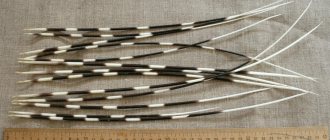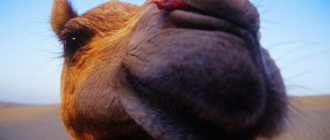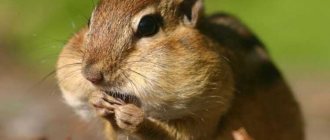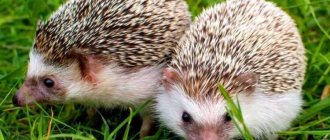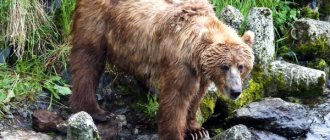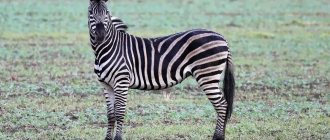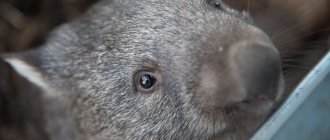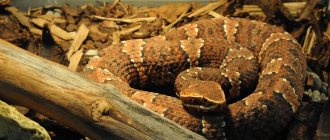Looking at the photo of the hedgehog, you will see how cute and unique this animal is. A hedgehog is an animal of the hedgehog family. It lives in European, Caucasian, Ural steppe and forest-steppe zones. In the vastness of the Taiga and the desert you can meet this animal in search of food. Hedgehogs are comfortable living on the edges of forests in bushes or near meadows. Let's take a closer look at where and how the hedgehog lives.
Description of hedgehogs
The size of hedgehogs ranges from 10-44 cm, weight 0.3-1.5 kg, tail 1-21 cm.
The head of hedgehogs is wedge-shaped and the muzzle is pointed. Hedgehogs' teeth are small and sharp: 20 on top and 16 on the bottom.
There are 5 toes on the paws (only the white-bellied hedgehog has four). They use them to clean the needles. The hind legs are slightly longer than the front legs.
The spines are hollow, and hairs grow between them, which are very thin and almost invisible. On average, one hedgehog has about 10,000 spines. All of them are gradually updated.
Most often, the needles are dark with light inclusions. Hedgehogs' fur can be black-brown, brown, white or sandy, and some have spotted fur.
The muscles are well developed, thanks to which hedgehogs curl up into a ball at a dangerous moment.
Hedgehogs see rather poorly, which cannot be said about their excellent hearing and discrimination of smells.
Many types of hedgehogs can not only move on land, but also swim and climb quite well. Travel speed on flat terrain is 3-4 km/h.
Features and habitat of the hedgehog
There are more than 20 different types of hedgehogs, but they are largely similar and recognizable due to their elongated muzzles on a rather large head for an average-sized hedgehog up to 20 cm long. The beady eyes are very lively and expressive, but they see poorly. But the sense of smell and hearing are excellent, although the antennae on the constantly wet and mobile nose and ears are small.
Many people mistakenly believe that the porcupine and the hedgehog are a group of animals with related ties. In fact, the resemblance is deceptive; hedgehogs' relatives live among moles, shrews and the lesser-known tenrecs and gymnurs. An animal that looks like a hedgehog with its prickly clothes is not always its relative. Thus, a sea urchin is an animal that has no resemblance to a forest dweller, except for the name.
The hedgehog is an insectivorous animal , the average weight of the animal is almost 800 g, but before hibernation it gains weight to about 1200 g. Males are slightly larger in size than females. The hedgehog's front legs are shorter than its hind legs, and five toes on each are equipped with sharp claws. The small tail, up to 3 cm, is almost invisible under the animal’s needle-like coat.
Brownish-light needles up to 3 cm in size, hollow inside. Under each needle there is a muscle fiber that can raise and lower it. Approximately 1-2 needles out of three grow and fall out every year. There is no complete shedding of the fur coat; gradual renewal of the coat occurs over a year and a half. Only sick individuals shed their needles.
The number of spines in one adult hedgehog reaches 5-6 thousand, and in a young animal - up to 3 thousand spines. There are also sparse blond hairs between the needles, but on the belly and head they are thick and darker in color. The gray plain woolen coat is more common, but among the hedgehogs there are white-bellied and spotted species.
Hedgehogs are known to curl up into a spiny ball if danger threatens. This possibility is associated with the work of the circular muscles, the ability to stretch the upper layers of the skin.
Animals can remain in this state for a long time until the threat passes. The needles grow at different angles and form a strong interweaving of spines. Such an impregnable ball.
Animal hedgehogs inhabit only two continents: Eurasia and northern Africa. Despite the similarity of the climate of Europe and North America, hedgehogs are no longer there, although fossil remains indicate a former settlement.
Mixed forests and copses, grassy plains, overgrown river floodplains, steppes, and sometimes deserts are habitats for thorny animals. Only swampy places and coniferous areas are avoided. In the animal world, hedgehogs their territory ; they live alone, mainly in a certain territory, which they regularly explore in search of food.
Hedgehogs are often found near human habitation or economic activity: in park areas, abandoned gardens, on the outskirts of cities and in grain fields. Forest fires, bad weather or lack of food contribute to this.
Hedgehog habitat
The common hedgehog lives in the northwestern territory of the European part of Russia, in the west and center of Europe, Kazakhstan and Western Siberia, in the south of Scandinavia and the British Isles.
Many people know where the hedgehog lives. Usually these are clearings and forest edges. They often settle near people's homes.
Note!
- Animals of the Red Book of Russia: complete list of animals, photo, name, description
- A Guide to Fish Oil and Omega-3
Koala: photo, lifestyle, habitat, habits, character, types, interesting facts
Hedgehogs hunt at night and rest in their nests during the day. They live in the roots of bushes, holes, or empty holes of others. The bottom of the hedgehogs' nest is covered with leaves and dry grass.
In spring and autumn, hedgehogs shed slowly, and during the summer the fat layer accumulates (up to 500 g). This allows you to hibernate from mid-autumn to mid-winter.
Waking up in the spring, the hedgehog is in no hurry to leave the nest, waiting for the onset of warm days with a minimum temperature of 15C. Except for the mating season, hedgehogs do not contact each other.
Character and lifestyle of a hedgehog
Hedgehogs are nocturnal animals; during the day they hide among the leaves and windbreaks of bushes, between the roots of plants. They do not like heat and hide in shallow, cool burrows or nests made of dry grass, moss, and leaves. The dimensions of such a dwelling are slightly larger than the size of the owner, up to 20-25 cm. Here the animal takes care of the fur coat on its chest and abdomen, licking it with its tongue.
The long middle fingers help clean the spines whenever possible, which protect against predators but collect ticks and other parasites. Among biologists, there is a concept called hourly, which refers to the number of ticks collected during an hour of movement through the forest.
An acid bath helps get rid of parasites, which is why hedgehogs like to “bathe” in rotten apples or other fruits. Associated with this behavior is the misconception of imagining a hedgehog as an apple eater. The animal's taste preferences are different.
In the dark, a subtle sense of smell helps, vision and hearing contribute. The activity of the animals reflects the route, reaching 3 km per night. Short legs do not allow them to move quickly, but with quick steps, hedgehogs are carried rapidly for their size at a speed of up to 3 m/sec. In addition, hedgehogs are good jumpers and swimmers.
what type of animal a hedgehog is by nature. He is peaceful, but he has many enemies in nature: wolves, foxes, ferrets, martens, kites, eagle owls, vipers. When meeting an enemy, the hedgehog first jumps on the predator in order to prick, and then the ball of needles becomes an impregnable fortress. Having punctured the paws and muzzle, the attacker loses interest in the prey and leaves.
But there are cunning ways to deceive the simple-minded hedgehog. Those animals that eat hedgehogs have the intelligence of a predator. The insidious eagle owl silently attacks and seeks to take its prey by surprise.
Strong scales on the bird's feet protect against prickly pricks. The fox tricks the hedgehog into the water or throws it from a hill into a pond. Having opened its abdomen and muzzle, a swimming animal becomes vulnerable to a predator.
In a duel between a hedgehog and a snake, the fearless prickly animal will be the winner. Grabbing her by the tail and curling into a ball, he patiently pulls her under him. An interesting fact is that hedgehogs are insensitive to many poisons.
For example, the caustic blood of caterpillars or ladybugs, bee venom, and the cantharidin of Spanish flies do not harm the prickly inhabitants, although such poisons cause death to other animals.
Hydrocyanic acid, opium, arsenic or sublimate have a weak effect on hedgehogs. By autumn, the animals accumulate fat for hibernation. Species of hedgehogs living in the southern regions remain active all year round.
The hibernation period takes place in the hole. The body temperature drops and the pulse decreases to 20-60 beats per minute. Awakening occurs in the spring when the air warms up by April. If there is not enough subcutaneous fat, the animal may die of starvation.
Hedgehogs know their areas and protect them from the encroachments of their relatives. Females occupy up to 10 hectares of area, and males occupy 2-3 times more. Their stay is indicated by noisy snorting, sounds similar to sneezing. Baby hedgehogs whistle and quack like birds.
Listen to the snort of a hedgehog Listen to the sounds of a hedgehog
Types of hedgehogs
There are 23 known species of hedgehogs, of which the most common are:
- common hedgehog;
- long-eared hedgehog - runs away in dangerous moments, and does not curl up into a ball like the others;
- Eastern European - similar to the common one, but its coat is lighter;
- African pygmy hedgehog - its needles have white tips;
- long-spined hedgehog - with a bald spot on the head and thick, long needles of a dark color;
- Ethiopian hedgehog - much more voracious than others;
- Daurian hedgehog - does not have bare skin, which is divided into parting needles on the head, like other species;
- ordinary gymnura - they are distinguished by a tail 17-29 cm long, which is covered with small hairs.
Nutrition
What do hedgehogs eat? The main diet of animals is plant food. Hedgehogs have priority:
- Beetles.
- Little frogs.
- Small lizards.
- Worms.
- Mice.
- Small insects and their larvae.
- Snails.
- Slugs.
- Eggs of some birds.
- Only newly born chicks.
The unique structure of the jaw allows hedgehogs to chew through rough food. In addition to living creatures, the hedgehog eats tree fruits and berries. Living in captivity, this small animal can eat milk, baked goods, apples, meat and cereal porridge.
Benefits and harms
Hedgehogs provide benefits by killing insects and preying on mice. Snakes do not get along with them in the same territory; rats also try to leave the hedgehogs’ habitats.
However, since hedgehogs love eggs and small chicks, they pose a threat to the chicken coop.
Also, proximity to hedgehogs is dangerous, since they can carry fleas, ticks, suffer from rabies, yellow fever, dermatomycosis, salmonellosis and other diseases.
It is not recommended to keep hedgehogs as pets. They are quite noisy at night and rest during the day. In addition, it is impossible to teach them various commands.
Winter period
During the colder months, hedgehogs go into hibernation. Before going into a hole, the animal gains a protective layer of fat that will prevent it from freezing in cold weather. Their body temperature drops to 3-4 degrees, and their pulse during deep sleep reaches 60 beats per minute.
If the animal fails to gain the required amount of subcutaneous fat, then it will not be able to survive the winter. Emaciated and hungry hedgehogs wake up at the beginning of spring and immediately go in search of insects.
Note!
- Removal and cremation of animals
Cynologists - who are they?
Car soundproofing. What is she like?
For the first time after awakening, the animal remains awake during the day, since the night is not enough for it to be completely saturated.
Photos of hedgehogs
What do hedgehogs eat?
The common hedgehog is an insectivorous animal. But the hedgehog's diet is not limited to insects. Hedgehogs mainly feed on a wide variety of insects, caterpillars, beetles, slugs, earthworms and also mice. It is quite rare for hedgehogs to get mice and voles.
Hedgehogs also eat eggs or chicks of small birds that make nests on the ground. Sometimes in nature, hedgehogs feed on reptiles and amphibians. Hedgehogs also eat berries and fruits. Therefore, we can safely say that the hedgehog is an omnivore. The only thing a hedgehog cannot eat is dairy products, as a hedgehog cannot digest lactose.
In exceptional cases, the hedgehog even eats a viper. After all, hedgehogs are immune to snake venom and more. The highly toxic poison found in other animals has no effect on this insectivorous mammal.
Poisons such as arsenic, opium and even hydrocyanic acid also have little effect on European hedgehogs. However, large doses of poisons are fatal to hedgehogs. But doses that kill other animals, as well as humans, do not harm hedgehogs.
Hedgehog's enemies in the wild
Despite the ability to curl up into a spiny ball for protection, the hedgehog often becomes prey to larger forest predators. Hedgehogs are hunted by foxes, wolves, badgers, hyenas, jackals, large owls, mongooses, badgers, and ferrets.
In recent years, a large number of animals have died under the wheels of cars when trying to cross the road at night.



